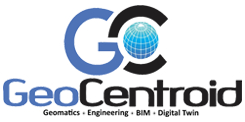Virtual Reality
3D Virtual Reality: Revolutionizing BIM in Construction
Integrating BIM with Virtual Reality
The construction industry is undergoing a transformative shift with the integration of Building Information Modeling (BIM) and Virtual Reality (VR). These cutting-edge technologies are enhancing design accuracy, accelerating the construction process, and reducing costs by improving efficiency and collaboration. VR, a technology that immerses users in digital environments, combined with BIM, offers an immersive and realistic way to visualize construction projects, adding a new level of precision and safety throughout the project lifecycle.
Immersive Design Review
Equip your team with a comprehensive VR toolkit for an unparalleled design review experience:
- Annotations: Add notes and comments directly within the VR environment.
- Layers: Manage different elements of the design for detailed inspections.
- Inspect Element: Examine specific components closely.
- Tape Measure: Measure distances and dimensions accurately.
- Scale Model Mode: View models in various scales for different perspectives.
- Sun Studies: Analyze natural light and shadows throughout the day.
Enhanced Collaboration
Utilize a variety of immersive collaboration tools to ensure everyone stays aligned:
- Multiuser Meetings: Host virtual meetings with team members from anywhere.
- Screenshots: Capture and share specific views and details.
- Viewpoints: Highlight critical areas and perspectives.
- No Headset Mode: Participate in VR meetings without a VR headset.
- Presenter Controls: Manage and direct the VR experience for others.
- Guest Viewer: Allow clients and stakeholders to view designs without full VR setups.
VR in Architecture, Engineering, and Construction (AEC)
The AEC industry is adapting to the new normal of remote and hybrid work. Virtual reality offers an engaging and immersive way for teams to interact and collaborate, providing a richer experience than traditional methods. VR enables participants to explore building designs in a virtual space, facilitating better understanding and quicker decision-making. This technology is invaluable for obtaining client buy-in, as it allows clients to experience and approve designs with confidence, speeding up project approvals.
Faster Approvals with VR
For many clients, traditional 2D plans or even 3D models on a screen can be difficult to interpret. VR eliminates this confusion by placing all stakeholders in the same virtual space, viewing the same design vision. This shared experience drives consensus faster and reduces misinterpretations. With the increasing availability and affordability of VR equipment, AEC professionals are leveraging VR tools to enhance client and colleague interactions. Technologies like VR motion capture and native audio add realism by enabling natural body language and gestures, making virtual interactions feel more authentic despite geographic distances.
In conclusion, the integration of BIM and VR in construction is not just a technological advancement but a paradigm shift in how projects are visualized and managed. These tools are making interactions more natural and realistic, bridging the gap between concept and reality. Embrace the future of construction with 3D virtual reality and bring your architectural visions to life with unprecedented clarity and detail.





